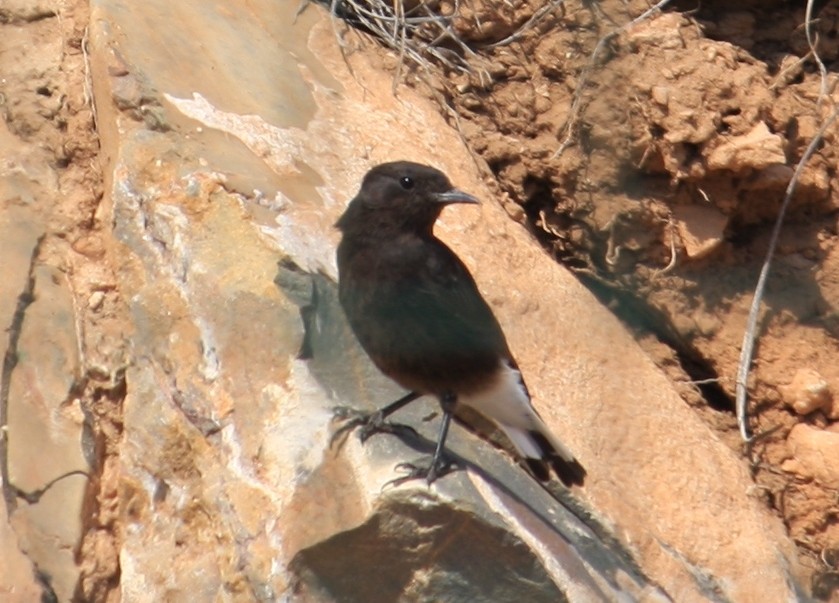Black Wheatear
A species of Wheatears Scientific name : Oenanthe leucura Genus : Wheatears
Black Wheatear, A species of Wheatears
Botanical name: Oenanthe leucura
Genus: Wheatears
Content
Description General Info
 Photo By Andrew Thomas , used under CC-BY-SA-2.0 /Cropped and compressed from original
Photo By Andrew Thomas , used under CC-BY-SA-2.0 /Cropped and compressed from original Description
The black wheatear (Oenanthe leucura) is a wheatear, a small passerine bird that was formerly classed as a member of the thrush family, Turdidae, but is now more generally considered to be an Old World flycatcher of the Muscicapidae. This large 16–18 cm long wheatear breeds on cliffs and rocky slopes in western north Africa and Iberia. It is largely resident and nests in crevices in rocks laying 3-6 eggs. The male of this species is all black except a white rump and mainly white tail. The female is similar, but dark brown rather than black. The similar white-crowned wheatear, Oenanthe leucopyga, also breeds in the African part of the black wheatear's range, but the black wheatear has a black inverted "T" on its white tail, whereas white-crowned has only a black centre to its tail. The black wheatear never has a white crown, but young white-crowned wheatears also lack this feature. The food of this wheatear is mainly insects. It has a loud thrush-like song. 
Size
18 cm
Nest Placement
Burrow
Feeding Habits
Black Wheatear primarily consumes a diverse diet of invertebrates, such as beetles, ants, grasshoppers, and scorpions, along with occasional plant matter like berries and seeds. These birds employ lookout perches to spot prey before diving to capture it, and they are known to forage actively into twilight, adapting to prey activity patterns.
Habitat
The black Wheatear typically inhabits arid, rocky environments distinguished by steep landscapes such as gorges, ravines, and sea cliffs. These regions often feature scattered boulders and sparse vegetation with a mix of bare ground and scrub. They are also known to reside in areas with human history, such as ancient settlements, ruins, and old houses. Their preferred habitats are located across a range of wooded, semi-wooded, semi-desert, and completely barren areas.
Dite type
Insectivorous
General Info
Feeding Habits
Bird food type
Species Status
Not globally threatened.
Scientific Classification
Phylum
Chordates Class
Birds Order
Perching birds Family
Old world flycatchers Genus
Wheatears Species
Black Wheatear